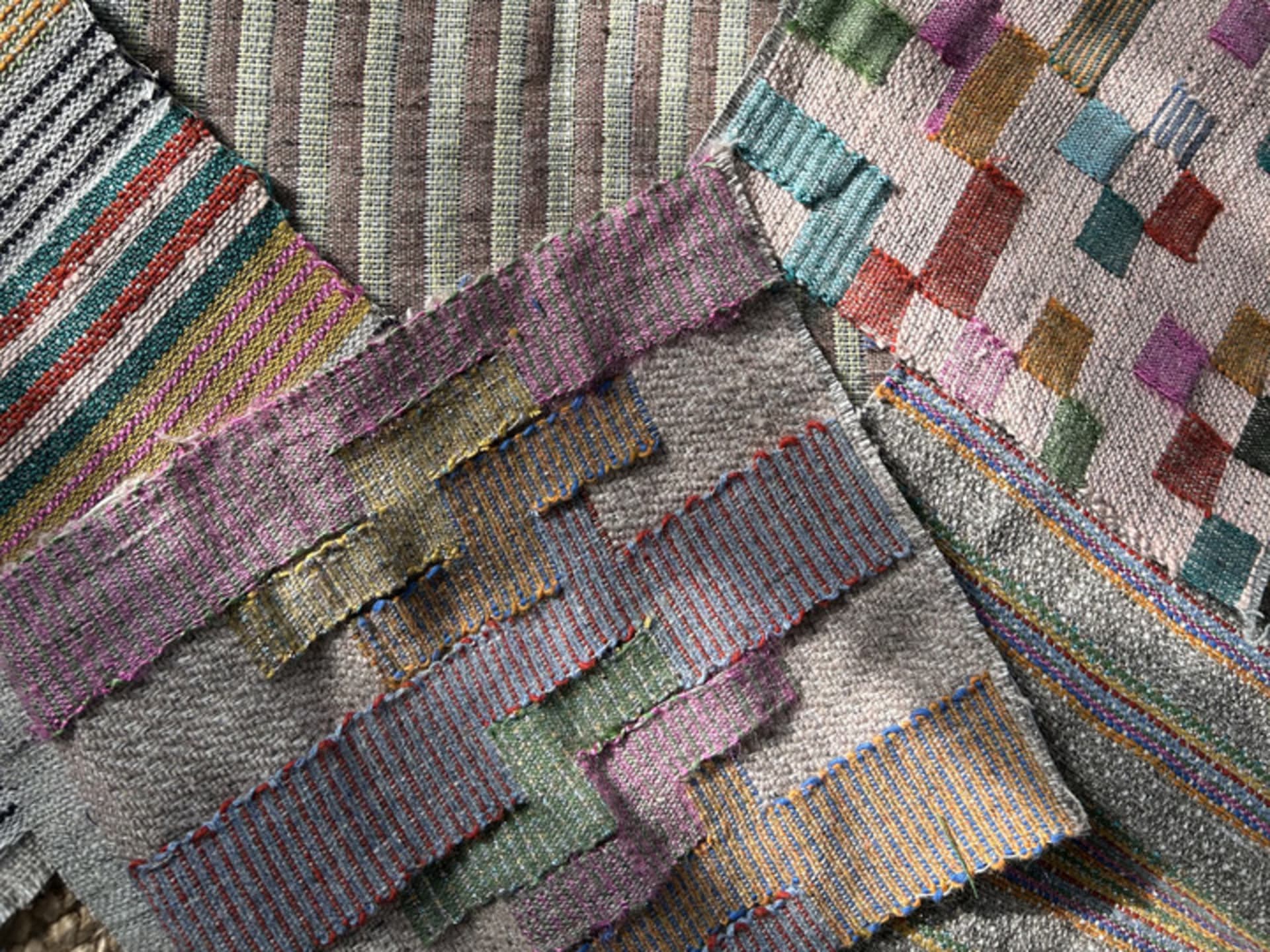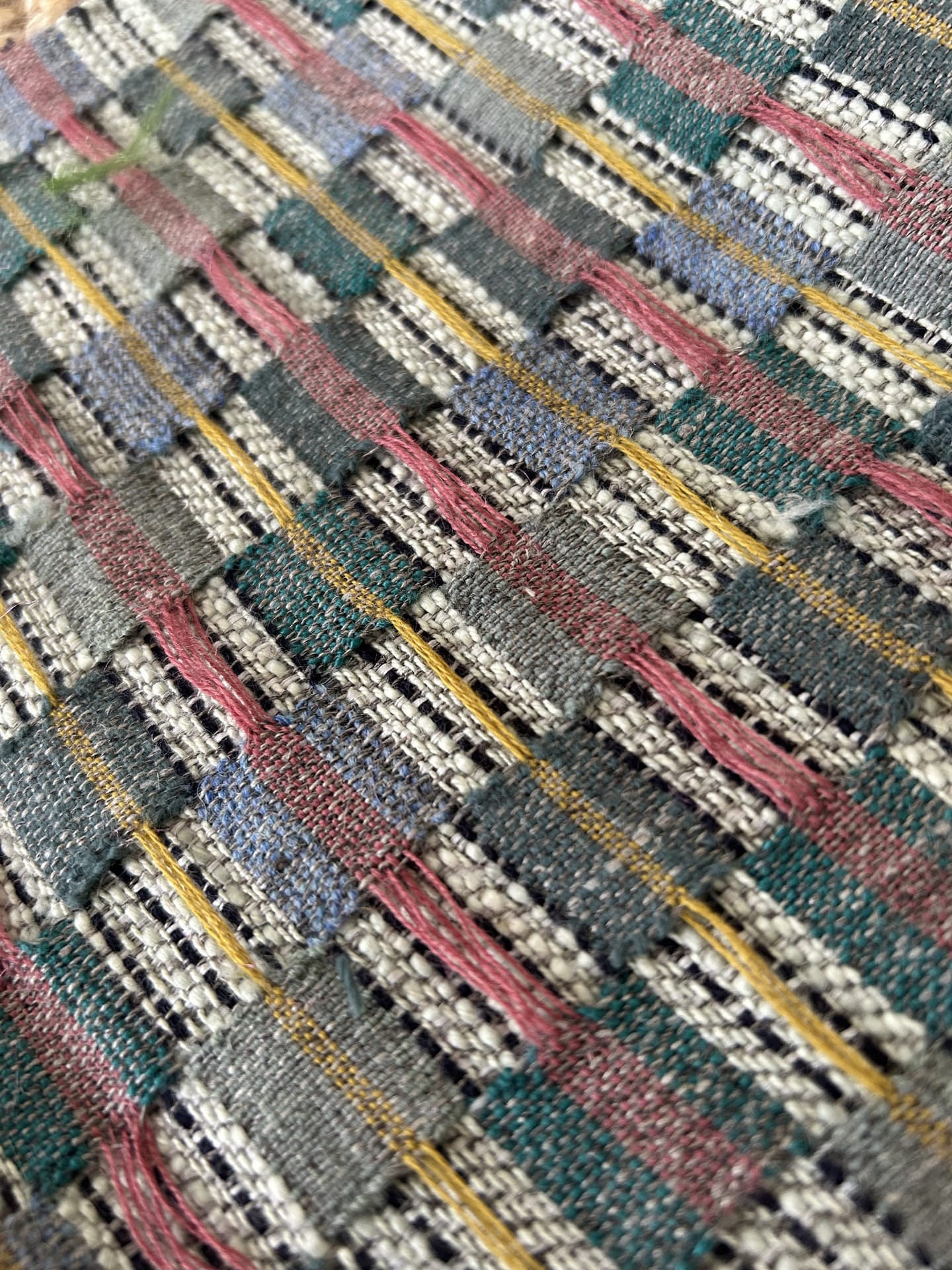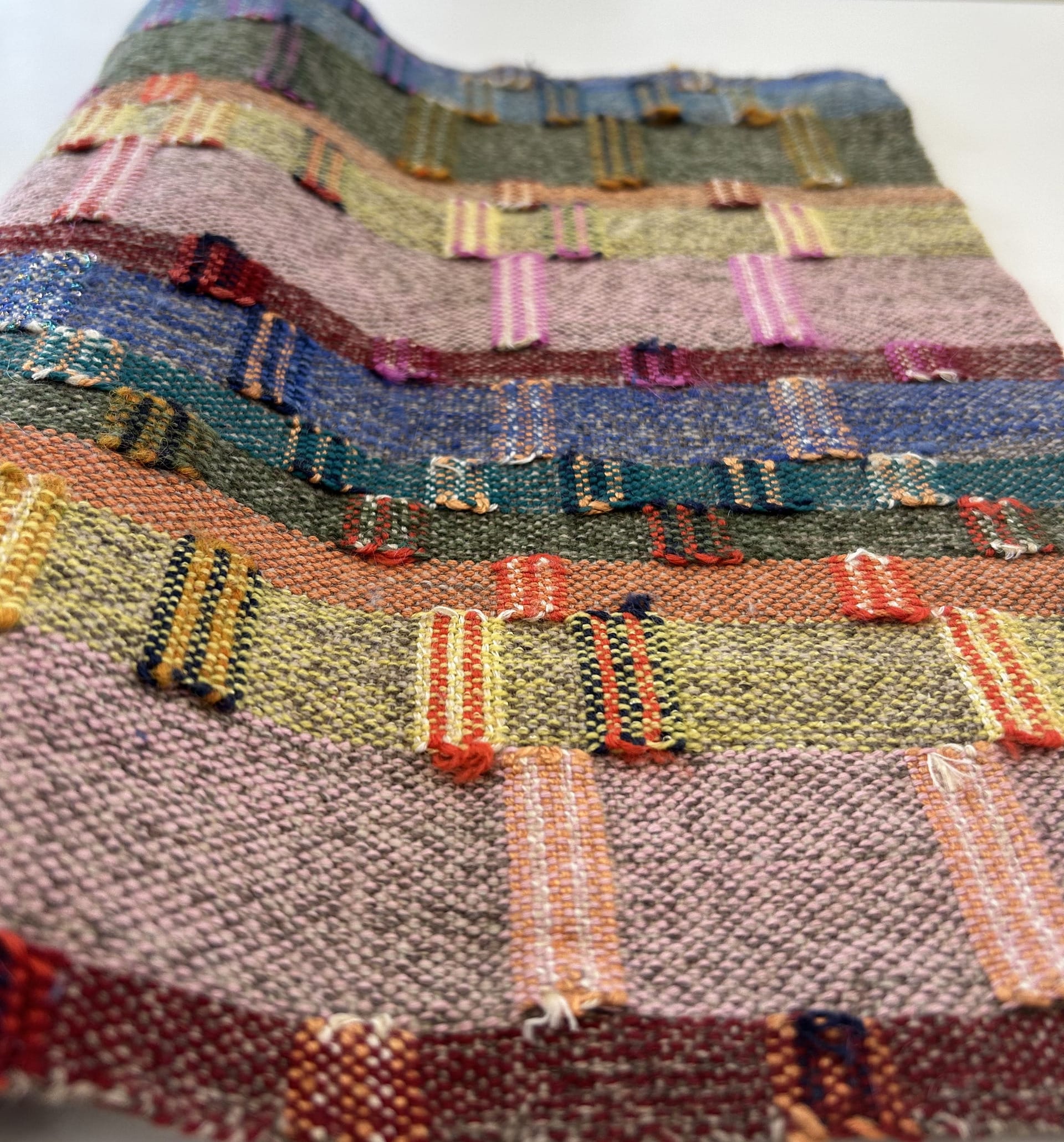Having previously studied at Central Saint Martins, Ismay carried on her exploration into waste yarns through weaving at the RCA. With a focus on craft and hand weaving techniques Ismay explores ways in which the design process can cater to the materials on hand to question the typical and traditional ways designers work. Not only does this formula put a spin on material quantity but also colour which plays to her strength and love of colour theory and experimentation. The process forces one to think out of the box and question everything we have been taught as designers and practitioners but in a world where we take and take, what materials we have left should come first.
Ismay Deegan


The use of ‘waste yarn’ in textiles usually refers to ‘usable’ quantities that designers or manufacturers have kept in case we might one day come back to it. This project aimed to explore ways in which we can interrupt the typical design process by working around the product we have left and question the line between waste being a useable quantity and what is considered rubbish. Through this exploration techniques were experimented with to find ways in which even the smallest pieces of yarn could be reused and woven into cloth which typically requires the yarn to run the width of the cloth.








